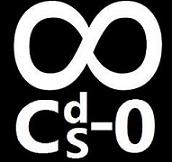After the optimisation work that the F1 chassis builder did for the carbon layup of the Venge McLaren, McLaren and Specialized continue to cooperate. This time, McLaren is focusing on studying the dynamic behaviour of bikes and analyzing how it can be improved tuning the mechanical characteristics of the frame. Bikeradar has the full story
Some interesting bits:
"The biggest issue is just how complex a bicycle is. It may seem less complex than a state-of-the-art Formula 1 car, but a bike is just a small part of the whole – the biggest factor of any bike is the rider.
The bike as a system is incredibly complex, in no small part that the ride is the integral and a highly dynamic part. Then you’ve elements like the tyre; the longitudinal and vertical deflection has an impact on performance and comfort.”
This is very well aligned with my original ideas that I have applied to develop the dynamical model. Pedal forces and reaction in the contact points have to be properly modelized to analyze dynamic behaviour of the bike. The last sentence endorse my idea that to try to capture the effect of frame stiffness on performance, it is mandatory to develop tire models complex enough.
As the McLaren engineer says, both vertical (through the relation between Crr and sinkage depth) and longitudinal deflection (through the relation between slip force and rotational stiffness of the tire) of the tire play a role on performance. I have integrated both effects in my dynamical model as you can see in the "Wheel loads" post.
"The whole research project stemmed from Specialized president Mike Sinyard’s idea that ‘smoother is faster’. It’s something the company has always thought of as true, without any real empirical factual back-up. From everything they’ve learned, Mark Cote from Specialized R&D was prepared to say: “If you can actively reduce kinetic energy losses the net gain is that you will be faster, so yes, smoother is faster. In the last six months of research we [Specialized] have learned more about bike dynamics than we have in the last 10 years.”
"It’s so early in the research partnership that no one really knows what the future will hold. McLaren could see the benefits of an intelligent bike that ‘self adapts’ – imagine a Roubaix that softens over the Pave, but sharpens up on smoother roads. McLaren hopes that it can ‘crack the logic’ of what makes a bike great. For McLaren it’s about generating the specification."
This is very interesting. I don't see a real active suspension like the one present in the Williams FW14 F1 car happening but something sleeker could be adapted to a road bike. Electroactive polymers or magnetoresistive fluids could be an option.
While all this happens, Trek is acquiring some data with an instrumented Domane for P-R.
Let's hope that some of all these interesting developments find a way to the white papers to give some scientific backup (or not) to the old mantra "Stiffer is always better".
That's all for today. Happy christmas and new year ;)






















